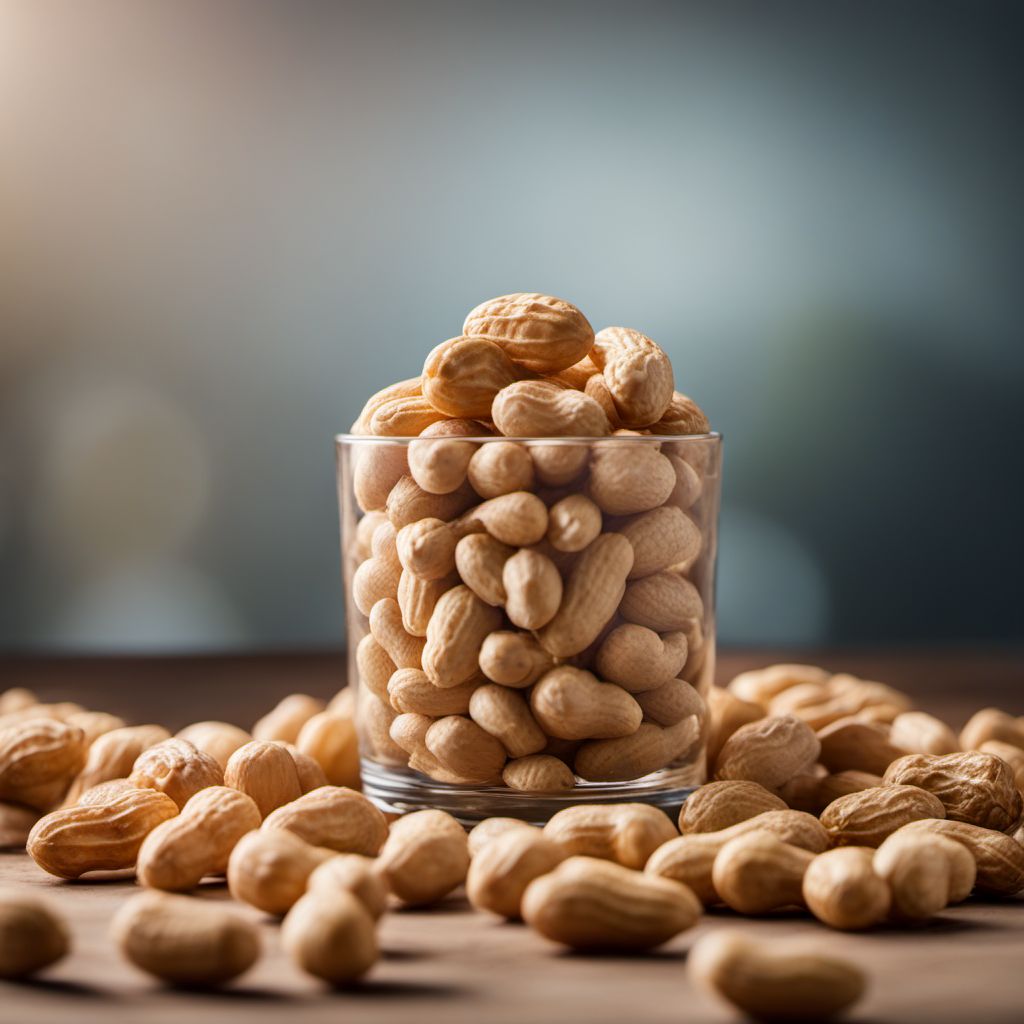
Ingredient
Peanuts and similar-
"The Versatile Legume: Exploring the World of Peanuts and Similar Ingredients"
Peanuts and similar ingredients, such as almonds, cashews, and pistachios, belong to the legume family and are characterized by their small size and hard shells. Once shelled, peanuts have a light brown color and a smooth, slightly wrinkled texture. They have a rich, nutty flavor with a hint of sweetness. Almonds, on the other hand, have a crunchy texture and a delicate, slightly sweet taste. Cashews are known for their creamy texture and mild, buttery flavor. Pistachios have a vibrant green color and a slightly sweet, earthy taste. These ingredients are not only delicious but also offer a satisfying crunch and a variety of textures to dishes.
Origins and history
Peanuts are believed to have originated in South America, specifically in the regions of Brazil and Peru. They were later introduced to Africa and Asia through trade routes. Peanuts have a long history of cultivation and consumption, dating back thousands of years. They were highly valued by ancient civilizations, including the Incas and Aztecs. In the 16th century, European explorers brought peanuts back to Europe, where they gained popularity. Today, peanuts are widely cultivated in countries such as China, India, the United States, and Nigeria.
Nutritional information
Peanuts and similar ingredients are packed with essential nutrients. They are a good source of protein, healthy fats, fiber, vitamins, and minerals. They provide a significant amount of monounsaturated fats, which are beneficial for heart health. Peanuts are also rich in antioxidants, such as resveratrol, which has been linked to various health benefits.
Allergens
Peanuts and similar ingredients, such as almonds, cashews, and pistachios, are known allergens and can cause severe allergic reactions in some individuals.
How to select
When selecting peanuts and similar ingredients, look for ones that are free from cracks, mold, or any signs of moisture. For peanuts, choose those that feel heavy for their size, as this indicates freshness. For almonds, cashews, and pistachios, opt for ones with intact shells and avoid any with a rancid smell.
Storage recommendations
To maintain the freshness and quality of peanuts and similar ingredients, store them in airtight containers in a cool, dry place. This helps prevent them from becoming rancid or absorbing moisture, which can affect their taste and texture. For longer shelf life, refrigeration is recommended.
How to produce
Peanuts and similar ingredients can be grown by amateur gardeners in suitable climates. They require well-drained soil, ample sunlight, and regular watering. However, due to their specific growth requirements and longer maturation period, it is recommended to consult local agricultural experts or nurseries for guidance.
Preparation tips
Peanuts and similar ingredients can be enjoyed in various ways. They can be roasted, salted, or used as a base for nut butters. Peanuts are commonly used in savory dishes, such as stir-fries, satay sauces, and peanut soups. Almonds are often used in baking, salads, and as a topping for desserts. Cashews are popular in vegan cooking, as they can be blended into creamy sauces or used as a dairy substitute. Pistachios are commonly used in both sweet and savory dishes, such as ice creams, pastries, and pilaf rice. To enhance their flavor, lightly toasting the nuts before use is recommended.
Substitutions
Almonds can be used as a substitute for peanuts in most recipes, providing a similar nutty flavor and texture. Cashews can also be used as a substitute, but they have a milder flavor. For pistachios, macadamia nuts can be used as a substitute, although they have a slightly different taste and texture.
Culinary uses
Peanuts and similar ingredients are widely used in various cuisines around the world. Peanuts are commonly used in Asian dishes, such as Thai peanut sauce, Chinese Kung Pao chicken, and Indian peanut chutney. Almonds are popular in baking, as well as in dishes like almond-crusted fish or almond milk. Cashews are often used in vegan cooking to create creamy sauces, dairy-free cheeses, and desserts. Pistachios are commonly used in Middle Eastern and Mediterranean cuisines, such as baklava, pistachio-crusted lamb, and pistachio ice cream.
Availability
Peanuts and similar ingredients are commonly available in regions such as North America, South America, Asia, and the Mediterranean. They are also cultivated in countries like the United States, China, India, Spain, and Iran.
